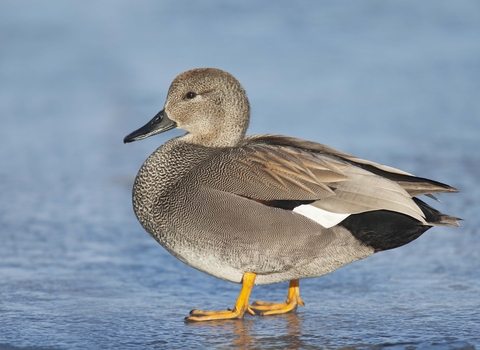
©Guy Edwardes/2020VISION
©Derek Moore
Gadwall
The gadwall is a dabbling duck, feeding at the surface of shallow water by 'upending' - putting its head down and its bottom up! Only a small number of gadwall nest in the UK, but large numbers winter here.
Scientific name
Anas streperaWhen to see
January to DecemberSpecies information
Category
Statistics
Length: 48-54cmWingspan: 90cm
Weight: 700-830g
Average lifespan: 4 years
Classified in the UK as Amber under the Birds of Conservation Concern 5: the Red List for Birds (2021). Protected in the UK under the Wildlife and Countryside Act, 1981.
Habitats
About
A fairly common dabbling duck found throughout the year, the gadwall is only a little smaller than a mallard. It nests in small numbers in the UK, on freshwater lakes with lots of vegetation, but can be seen in large numbers in winter at reservoirs, lakes, flooded gravel pits and coastal wetlands.How to identify
Male gadwalls are a grey-brown colour with a black rear end. Both males and females can be distinguished by the white patches on their wings.Distribution
Mainly found in south and eastern England, but can be seen anywhere.Did you know?
Gadwall can sometimes be seen following coot around. After the coot has dived down to pick waterweed, the opportunistic gadwall will grab some for itself!Watch
Gadwall (https://vimeo.com/444901884)
Gadwall by Tom Hibbert
